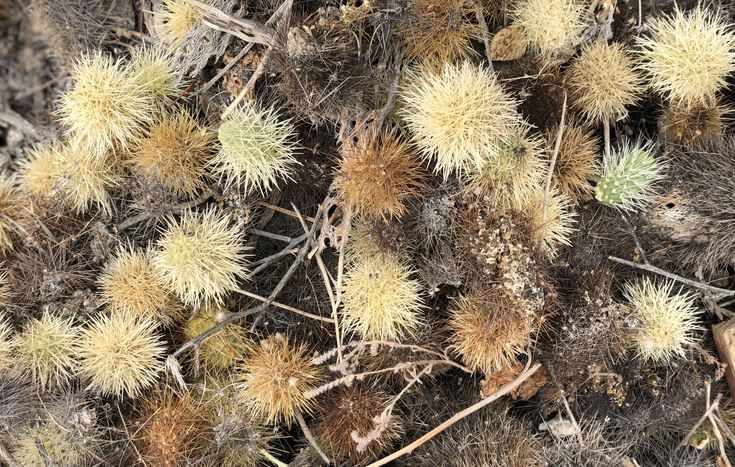In the vast expanse of California’s desert landscape lies the iconic Joshua Tree, known for its otherworldly beauty and unique shape. However, despite its name, the Joshua Tree is not a cactus, sparking curiosity and confusion among nature enthusiasts and casual visitors alike. This article delves into the botanical specifics of the Joshua Tree, its classification, and what makes it distinct from cacti.
First and foremost, it is essential to clarify the botanical taxonomy of the Joshua Tree, scientifically known as Yucca brevifolia. This plant is a member of the Asparagaceae family, which also includes various other genera such as agaves and lily plants. In contrast, cacti belong to the family Cactaceae. This fundamental distinction sets the stage for understanding not only the biological differences but also the ecological niches filled by these two types of desert flora.
The Joshua Tree is technically a succulent, much like several cacti. However, it does not fall under the recognizable umbrella of the cactus family because it does not possess the physiological traits typically associated with cacti, such as areoles—small, cushion-like structures where spines, leaves, and flowers originate. Instead, the Joshua Tree exhibits rosette patterns of long, strap-like leaves that can reach lengths of over three feet. The plant’s unique architecture, characterized by a sturdy trunk that can rise up to 15 feet tall, showcases its adaptation to the arid climate of the Mojave Desert.
So, what does the Joshua Tree symbolize in the ecosystem? It is integral, serving as both a habitat and a food source for numerous species. In the arid environment where it thrives, the Joshua Tree provides shelter and sustenance for critters such as the desert tortoise, various birds, and insects. This mutualistic relationship highlights an intricate web of ecological interdependence that is vital for maintaining biodiversity in this desert biome.
When people think of the Joshua Tree, they often envision the striking silhouette against vibrant desert sunsets or starry night skies. These trees possess a cultural significance as well. Indigenous peoples in the region, such as the Chemehuevi, have historically utilized the Yucca plant for various practical purposes, including weaving fibers for baskets, mats, and even clothing. The versatility of the Joshua Tree illustrates the deep-rooted connections between indigenous communities and their surrounding natural landscapes.
In exploring the distinctions between the Joshua Tree and cacti, it is crucial to examine their morphological properties. Cacti generally have a fleshy stem that is adapted for water storage, spines that deter herbivores, and often show a form of photosynthesis known as CAM (Crassulacean Acid Metabolism) that allows them to conserve water. The Joshua Tree, on the other hand, features fibrous leaves that are more drought-resistant than those of most cacti. This adaptation is particularly advantageous in the extreme temperatures and irregular precipitation that characterize the Mojave Desert. As a result, while both types of plants have mechanisms for surviving harsh conditions, their evolutionary paths have diverged significantly.
Color and texture in the context of the Joshua Tree contribute not only to its visual appeal but also to its ecological attributes. The greenish-blue hue of the leaves is a result of chlorophyll, which is crucial for photosynthesis, while the thick, fibrous structure decreases water loss through transpiration. Such traits allow the Joshua Tree to flourish in its native habitat alongside a variety of other desert vegetation, including various species of cacti, which thrive on their distinct characteristics.
The flowering season of the Joshua Tree, typically occurring in late winter to early spring, further cements its individuality. The flowers exhibit a creamy white to pale yellow hue and can grow to be quite large, attracting pollinators such as moths and bees. It is noteworthy that the Joshua Tree relies on specific moths, particularly the Tegeticula plantaginis, for pollination, illustrating a fascinating example of co-evolution. This relationship serves as an illustrative case of specialization where particular flora and fauna develop adaptations tailored to each other’s reproductive needs.
On a broader scale, discussions surrounding climate change and desertification elevate the importance of understanding plants like the Joshua Tree. As increasingly erratic weather patterns occur, species not only face the challenge of adapting to changing conditions but also contend with habitat degradation. The conservation of Joshua Trees is crucial because their decline would not only signify a loss of a unique species but also negatively impact the broader ecosystem, including the myriad of species that depend on this distinctive tree for survival.
In conclusion, while the Joshua Tree does share some characteristics with cacti, including its ability to survive in harsh environments, it remains a member of a different botanical family. Recognizing its identity as Yucca brevifolia elucidates its ecological significance and cultural heritage. Just as desert landscapes are rich with diversity, so too are the relationships that blossom within them. Whether standing alone in isolation or clustered in groves, the Joshua Tree thrives as a symbol of resilience and the intricate balance of nature.





Leave a Comment